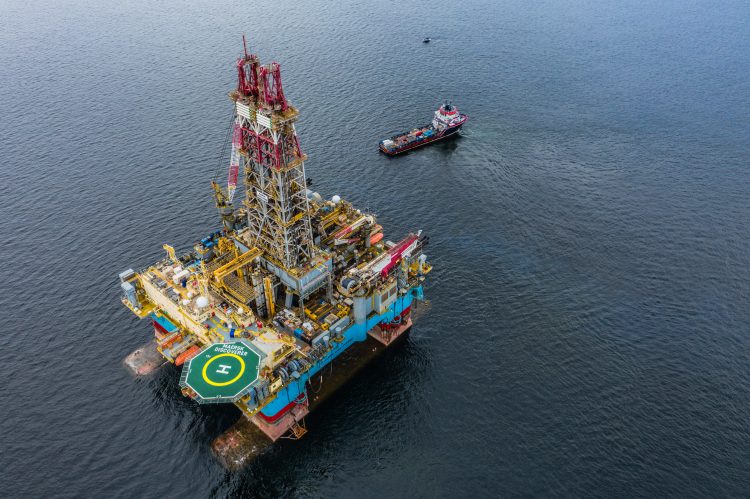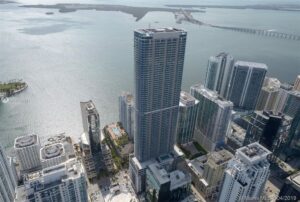
(Trinidad Guardian, 10.Feb.2022) — T&T can expect 2022 to be another year of major natural gas shortages that will negatively impact the country’s economy, LNG exports and the downstream petrochemical sector.
The country’s largest natural gas supplier bpTT has confirmed that it will this year produce a mere 1.25 billion standard cubic feet per day (bscf/d), 750 million standard cubic feet per day(mmscf/d) less than it had produced a mere two years ago.
The figure is significantly less than it told the Ministry of Energy in July this year that it would produce, down by more than 17 per cent, which was itself down by 15 per cent from its prediction in 2020.
In a confidential series of documents which Guardian Media obtained, bpTT told the Dr Keith Rowley administration that going forward it should expect much lower than forecast natural gas production, with the shortfall being 15 per cent in 2021 and over ten per cent until 2024.
The performance last year was worse than predicted and now forecast to be 17 per cent lower, rather than the former 10 per cent shortfall.
The documents showed that even that the Matapal and Cassia C projects that were expected to increase production by about 140 (mmscf/d), this is not going to be the case.
The news effectively puts to an end any thoughts that T&T could even produce 3bscf/d in 2022, a figure it was able to reach at the start of 2021, before the precipitous falloff in bpTT’s production.
The news could not be worse for Finance Minister Colm Imbert who should have been smiling these days with high commodity prices, but low production has meant a major opportunity lost for additional revenue and in particular the earning of scarce foreign exchange.
In response to questions from the Business Guardian, bpTT said it ended 2021 averaging 1,250 mmscfd.
BpTT said: “We expect production for 2022 to be within the same range.”
The company blamed technical issues for the precipitous decline in production in 2021 and it admitted that even the coming on stream of its Cassia C project will only hold production in place.
“During 2021 we experienced accelerated production decline due to technical issues, which was partially offset when we brought Matapal onto production in September. For 2022, production levels will be supported by gas from Matapal, and the Cassia C development which is planned to come online in 3Q 2022.”
According to the latest figures from the Ministry of Energy and Energy Industries for the first 11 months of 2021 natural gas production averaged 2.578 bscf/d with the production of 2.385 bscf/d in November compared to 3.001 bscf/d in January.
The decline almost mirrors bpTT’s production with it falling from January when it was 1.525 bscf/d to 1.265 in November 2021.
But while bpTT is the major challenge, since it is the largest natural gas producer, Royal Dutch Shell continues to produce at relatively low levels. From January to November last year Shell’s production averaged 498 mmscf/d.
To understand these figures, during the months of January to November last year an average of 248 mmscf/d was used to power the entire country. The decline in production by bpTT alone means the equivalent of gas to power T&T three times over, everyday, 24 hours a day.
BpTT added that it will continue to invest in efforts to grow production. It pointed to the sanctioning of its joint project with EOG Resources, it also points to the return to infill drilling as examples of its efforts to improve production.
“As we continue to invest in production generating activities in Trinidad, we were pleased to sanction the EOG Operated Mento development at the end of last year, the BHP Operated Calypso development completed appraisal well and bpTT plans to restart our infill drilling programme later this year. We are also working on a number of future development options for bpTT, including our next major project the Cypre development which we are hoping to sanction this year,” bpTT said.
The news is almost as bad on the production of crude oil. Crude production for the first 11 months of last year averaged 59,726 as the increase in BHP’s production out of its Ruby field helped stave off decline in bpTT and Perenco’s production.
State-owned Heritage production along with that of its lease operators and joint venture partners averaged close to 35,000 bo/d. BHP averaged 6572 while Perenco held at 8,500 bo/d.
In his 2022 budget statement four months ago, Finance Minister painted a picture of an energy sector in rebound but the numbers and projections do not support this narrative. He told the Parliament: “We are stabilising our oil and condensate as well as gas production: natural gas production which decreased in 2020 is projected to rise in 2021 to 2.77 billion standard cubic feet and in 2022 to 3.37 billion standard cubic feet and thereafter to stabilise at 3.60 billion standard cubic feet.
“Oil and condensate production decreased from 71,725 barrels per day in 2016 to 56,481 barrels per day in 2020; but since then, has been increasing and is projected to reach 64,000 barrels per day by the end of 2021, further increasing to 86,000 barrels per day in 2022 stabilising thereafter around that level in the medium-term.”
On the Petrochemical side where prices are high and the returns best for the Government, the industry continues to suffer from natural gas curtailment.
The Ministry of Energy figures show ammonia production for the first 11 months totalling 4,481,698, below the 5.2 million metric tonnes capacity.
Its methanol productions was 5.035 million metric tonnes.
With Train 1 dead T&T’s installed LNG capacity is under 2 bscf/d however for the first 12 months the average production was a mere 1.256 bscf/d.
All of this points to continued challenges for government and the economy.
____________________
By Curtis Williams

